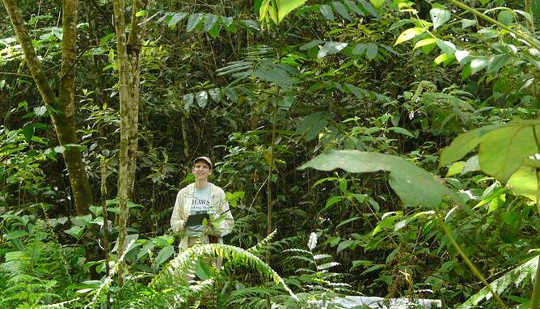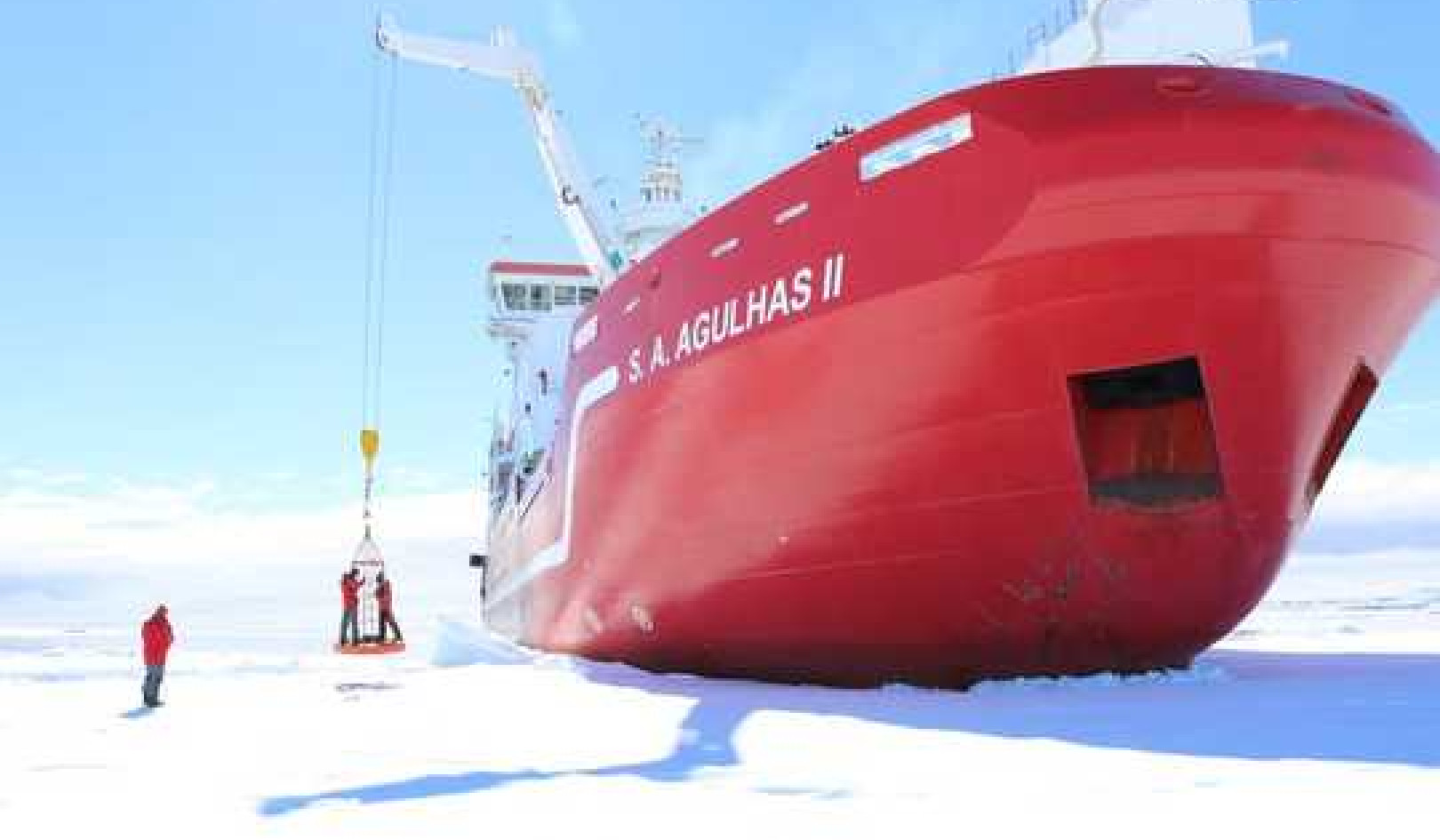 Dr. Letcher in a 15-year-old secondary forest in Costa Rica. Susan G. Letcher
Dr. Letcher in a 15-year-old secondary forest in Costa Rica. Susan G. Letcher
When you cut and burn a tropical forest, you’re left with a barren plain of cracked red mud, incapable of supporting life – the opposite of the teeming, hyperdiverse array of life that was destroyed. Once the trees are gone, the nutrients wash away and the soil degrades into a dense, brick-like layer so hardened that plant roots can’t get through it.
This was the vision of tropical deforestation held in the popular imagination for many years, but the reality is more complex – and more hopeful.
In recent decades, researchers have found that tropical forests are remarkably resilient. As long as some remnants are left when the forest is cleared to provide seeds and refuges for seed dispersers, tropical forests can grow back with astonishing speed.
In a paper published this week in Nature, lead author Lourens Poorter and a team of international collaborators, including me, found that forests in Central and South America can quickly rebound without human intervention on land that has been cleared for cattle grazing or growing crops.
This finding has important implications for climate change because these so-called secondary forests soak up large amounts of carbon from the atmosphere, even without costly reforestation efforts. These regenerating forests are also crucial for protecting biodiversity and all the ecological and social benefits it provides.
Carbon sponges
Tropical secondary forests – that is, forests that grow after a major clearing, such as a fire, farming or logging – cover an increasing part of the globe. And as their extent expands, so does their potential to shape conservation strategies, both at the local and global scales.
At the U.N. Climate Summit in 2014, 30 nations and a host of NGOs and private companies endorsed the New York Declaration on Forests, a document that advocates halving deforestation by 2020 and ending it completely by 2030.
One of the key points of the declaration calls for the restoration of 150 million hectares (about 375 million acres) of degraded forest land by 2020 and additional restoration in the following decade.
But active forest restoration can be an expensive process, and it may not be cost-effective or even necessary in every case. In landscapes with low levels of degradation, simply protecting young forests and allowing them to develop may be the best strategy.
In our research, my colleagues and I present the largest data set yet assembled to investigate forest regrowth in the New World tropics. The data set spans 45 sites in the lowland tropics from wet forest to dry forest, with a total of 1,478 plots and more than 168,000 individual trees.
It offers an unprecedented, and more hopeful, view of forest recovery.
According to this analysis, tropical secondary forests have enormous potential for removing carbon from the atmosphere. The net carbon uptake for these secondary forests is 11 times that of old-growth forests in the region we studied.
The rate of biomass recovery varies widely across the region, with the fastest regrowth in areas with high rainfall. The median time for a forest to reach 90 percent of old-growth biomass levels was 66 years, but recovery can be much faster in some areas.
Big win for biodiversity
It shouldn’t come as a surprise that tropical forests can grow back after major disturbances. Tropical forests can be affected by a number of different large-scale natural disasters like floods, fires, landslides, major storms and volcanic eruptions.
Even old-growth tropical forests are highly dynamic systems, marked by cycles of tree death and regrowth. The mortality rates for trees larger than 10 centimeters in diameter have been estimated at one percent to two percent per year for forests in the Amazon and Central America. In other words, at the upper end, one in every 50 large trees will fall in the course of a given year.
The gaps in the forest that result from treefalls are rapidly colonized by a riot of vines and fast-growing tree saplings. The heterogeneity of habitats produced by this cycle is a major driver of tropical diversity.
In addition, the history of human-induced disturbances in tropical forests is longer and more complex than we often acknowledge.
Legacies of ancient human use, stretching back for millennia, have been detected in nearly every “pristine” tropical forest on earth: massive earthworks in the Amazon and modern-day Cambodia; charcoal and pottery fragments in the Congo Basin; and evidence of forest clearing going back nearly 50,000 years in Papua New Guinea.
Indeed, various forms of slash-and-burn cultivation have been practiced for millennia throughout the tropics.
As long as the cleared areas are modest in size and the period between cycles of cultivation is sufficient for recovery, diverse forests can persist for thousands of years.
Local and global benefits
Tropical secondary forests can – and should – form a substantive part of the long-term global strategy to combat carbon emissions and preserve biodiversity for the future.
Our recent research shows, for example, that in areas where biomass recovery is slow – like the tropical dry forest – we should prevent further forest loss. Where recovery is rapid, we can combine old-growth forest conservation with policies that promote secondary forest formation.
Shifting focus to the conservation of regenerating forests should not take away from the urgent imperative to conserve the remaining uncut tropical forest.
The clearing of old-growth tropical forests is a major source of human-induced greenhouse gas emissions, second only to fossil fuel combustion. Clearly, keeping the carbon that’s currently stored in intact tropical forests from being released to the atmosphere should be a priority.
Old-growth tropical forests also harbor immense biological diversity – including genetic diversity – and if all of the remaining old-growth forests in a landscape are cut, there will be no seed source to promote regeneration.
Conserving secondary forests offers a different, and complementary, set of benefits.
As well as their massive potential for taking up carbon as they grow, secondary forests provide resources and livelihoods for the people who inhabit them.
Secondary forests can harbor a high diversity of ethnobotanically important species that can be used for medicines. They can serve as extractive reserves, where limited harvesting of timber, game animals and other forest products will prevent the exploitation of resources in vulnerable protected areas. They protect watersheds and prevent erosion.
As secondary forests grow back, they eventually come to resemble the forest that was cut, and in the meantime, they knit together the remaining fragments of forest into a more contiguous landscape.
As David Quammen wrote in “Song of the Dodo (1997),” isolated populations of organisms in forests lose connections to the resource base that supports them. Over generations they lose their genetic diversity, making them more vulnerable to inbreeding, disease, and eventual extinction.
Secondary forests offer the hope of reconnecting habitats and creating a more resilient landscape for the future.
So harnessing the power of forest regeneration in the tropics will have benefits both locally – providing resources and restoring ecosystem services – and globally, by sequestering carbon from the atmosphere.
At the Paris Climate Summit, leaders took important steps toward halting deforestation. Promoting forest regrowth is another vital piece of the equation. It’s time for policymakers to recognize the benefits that tropical secondary forests provide, and to shape policies that take advantage of this enormous potential.
 About The Author
About The Author
Susan Letcher, Assistant Professor of Environmental Studies , Purchase College State University of New York. She is a terrestrial ecologist and environmental scientist with a broad range of research interests: botany, plant taxonomy (particularly for tropical trees); community ecology, forest succession, community phylogenetic structure; the role of tropical ecosystems in the global carbon cycle; and robust statistical methods for biodiversity estimation.
This article was originally published on The Conversation. Read the original article.
climate_books
























